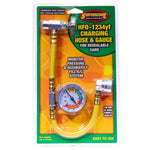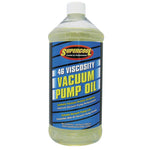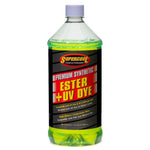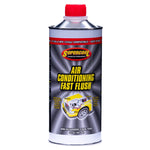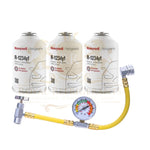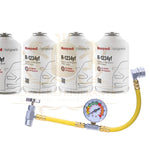You have no items in your shopping cart.
Everything You Need to Know About Freon for Car for HVAC and Automotive Applications
Refrigerants are the backbone of air conditioning systems, both in vehicles and in residential or commercial HVAC units. Among the many terms used to describe these cooling agents, “Freon” is one of the most recognizable. Originally a trademarked name for certain refrigerants, Freon for cars has become a common phrase for automotive air conditioning refrigerants. Understanding what Freon is, how it’s used in cars, and its role in HVAC applications is essential for anyone working with cooling systems or maintaining vehicle comfort.
This article explains everything you need to know about Freon for cars, including its history, types, applications, and important considerations for HVAC and automotive systems.
What Is Freon?
“Freon” is actually a brand name first introduced by DuPont for a series of chlorofluorocarbon (CFC) and hydrochlorofluorocarbon (HCFC) refrigerants. Over time, the name became widely used as a generic term for refrigerants in automotive and HVAC systems.
Freon was originally associated with R-12 (dichlorodifluoromethane), which was the standard refrigerant used in automotive air conditioning systems for decades. However, R-12 was phased out in the 1990s due to its ozone-depleting properties and environmental impact. Since then, other refrigerants have replaced R-12, but many people still refer to them as “Freon” out of habit.
Types of Freon Used in Cars
Over the years, different refrigerants have been used in automotive air conditioning systems, commonly referred to as Freon:
- R-12: The original automotive AC refrigerant, phased out due to ozone depletion concerns.
- R-134a: Introduced in the 1990s as the main replacement for R-12, widely used in vehicles for over two decades.
- R-1234yf: A newer refrigerant designed with a much lower global warming potential (GWP) than R-134a, now standard in many modern vehicles.
While R-12 is no longer in use, older cars may still have systems designed for it. Most cars built after 1994 use R-134a, while vehicles manufactured in the last decade are more likely to contain R-1234yf.
How Freon Works in Car Air Conditioning
Freon in a car’s AC system circulates through a closed loop, absorbing heat from inside the vehicle and releasing it outside. The process involves four main components:
- Compressor: Compresses the refrigerant gas, raising its pressure and temperature.
- Condenser: Releases heat as the refrigerant changes from a gas to a liquid.
- Expansion valve or orifice tube: Reduces pressure, allowing the refrigerant to expand and cool.
- Evaporator: Absorbs heat from inside the car cabin, cooling the air blown through the vents.
Without Freon (or its modern equivalents), this cooling cycle cannot occur, making it a critical part of vehicle comfort and safety.
Applications of Freon in HVAC Systems
Although the term “Freon” is mostly associated with automotive applications, it also has a long history in HVAC systems. Refrigerants originally marketed as Freon were widely used in residential and commercial air conditioning units, chillers, and refrigeration systems. Just like in vehicles, these refrigerants enabled heat transfer and cooling in large-scale applications.
Today, HVAC systems use a range of newer refrigerants, such as R-410A, R-407C, and R-32, but many technicians and consumers still casually refer to these as “Freon.”

Advantages of Using Freon in Cars
- Effective cooling performance for maintaining comfortable cabin temperatures.
- Proven track record with decades of successful use in automotive systems.
- Wide availability, especially for R-134a, which is still in use in many vehicles worldwide.
- Compatibility with different system designs, making it suitable for both older and newer vehicles.
Environmental Considerations
While Freon has been essential to cooling systems for decades, its environmental impact cannot be overlooked. R-12 and other older refrigerants were banned due to their ozone-depleting properties. Even R-134a, though ozone-safe, has a high GWP, leading to regulatory efforts to phase it down in favor of environmentally friendlier options like R-1234yf.
For HVAC systems, similar regulatory changes are pushing the industry toward lower-GWP refrigerants, ensuring compliance with international agreements such as the Montreal Protocol and Kigali Amendment.
Handling and Safety Tips
When working with Freon or any refrigerant in cars or HVAC systems, technicians should follow proper safety practices:
- Use certified equipment for refrigerant recovery and recycling.
- Avoid direct contact with refrigerant, as it can cause frostbite on skin or eye injuries.
- Do not mix refrigerants in one system, as this can damage components and reduce efficiency.
- Store and transport cylinders properly in accordance with safety standards.
Correct handling not only ensures technician safety but also prevents accidental release of refrigerants into the environment.
Conclusion
Freon, once a trademarked brand name, has become a widely recognized term for refrigerants used in both cars and HVAC systems. In automotive applications, Freon refers to refrigerants like R-12, R-134a, and R-1234yf that power air conditioning systems and keep drivers comfortable. While older versions of Freon have been phased out due to environmental concerns, modern alternatives continue to play a vital role in both vehicle and HVAC cooling systems.
As technology evolves and stricter regulations come into play, the industry continues to move toward refrigerants that balance performance with environmental responsibility. For now, Freon and its replacements remain essential for keeping vehicles cool on the road and ensuring reliable climate control in HVAC applications.
 English
English

